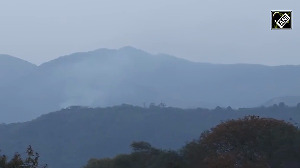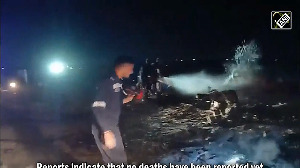 The Central Board of Direct Taxes is considering use of third parties to recover tax dues.
The Central Board of Direct Taxes is considering use of third parties to recover tax dues.
This is part of a plan to control mounting tax arrears.
The plan has been envisaged because insufficient information on assets of taxpayers is hampering CBDT's recovery efforts.
The income tax arrear demand made by CBDT stood at Rs 2,29,032 crore (Rs 2,290.32 billion) on March 31, 2010.
Out of this, Rs 9,476 crore (Rs 94.76 billion) is difficult to recover because the assessees are not traceable.
Cases where the board has found no or insufficient assets for recovery -- called 'no-asset cases' -- account for Rs 92,360 crore (Rs 923.6 billion).
A worried CBDT has felt the need to take outside help to find these assets.
CBDT is also planning to reward those who give information on assets of defaulters.
The names of defaulters who are not traceable or whose assets are not identifiable may be given in newspapers.
Anyone giving information in response will be rewarded.
At present, those who give tip-offs at the time of investigation, that is, before the tax demand is raised, are rewarded.
The board is also increasing the limits for taking irrecoverable demands off its books by four-five times.
For example, it proposes to raise the limit for write-offs at the level of income tax officers from Rs 5,000 to Rs 25,000.
Similarly, at the highest level (chief commissioner of income tax, full board, finance ministry), the limit is proposed to be increased from Rs 50 lakh (Rs 5 million) to Rs 2 crore (Rs 20 million).
Tax arrears may be declared irrecoverable if the assessee has become insolvent, is not traceable or has left India.
In case of companies, the write-off can happen if the company has gone into liquidation and its business has been discontinued.
The demand can be considered irrecoverable if the assessee has no attachable assets.
Writing off of irrecoverable demands is an administrative act and does not lead to waiver of the government's claim.
It only helps such amounts to be written off the Income Tax department's books.
These may be recovered for the next 30 years.









 © 2025
© 2025